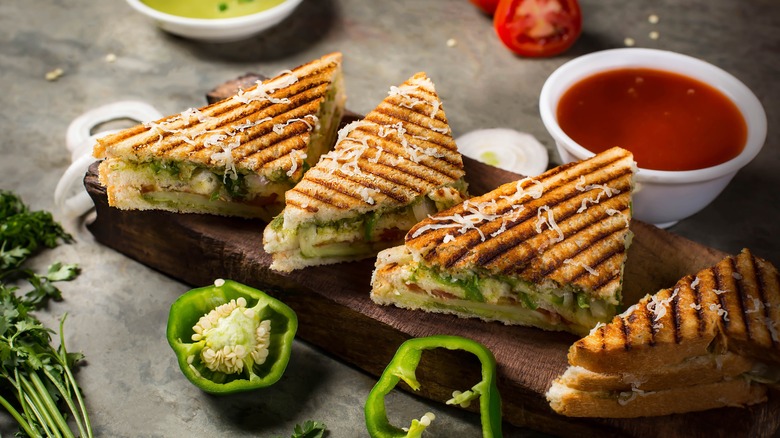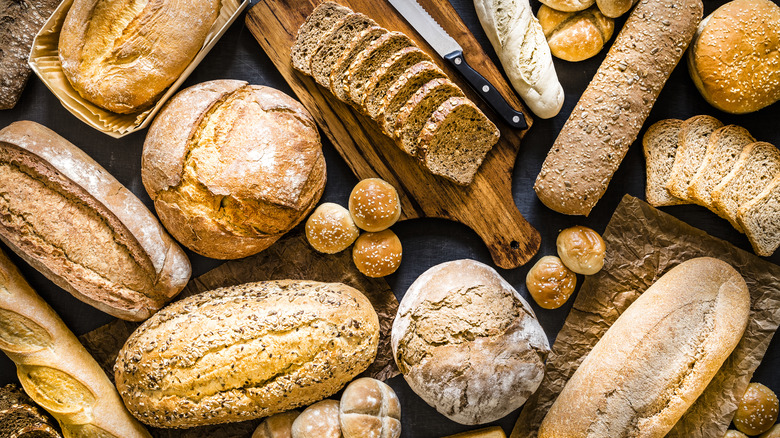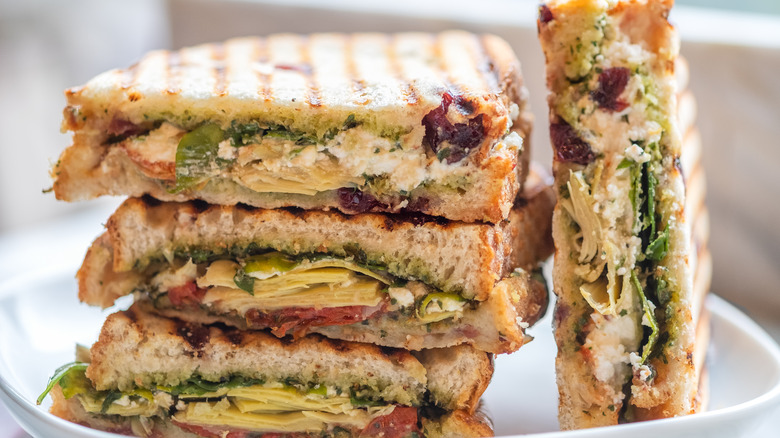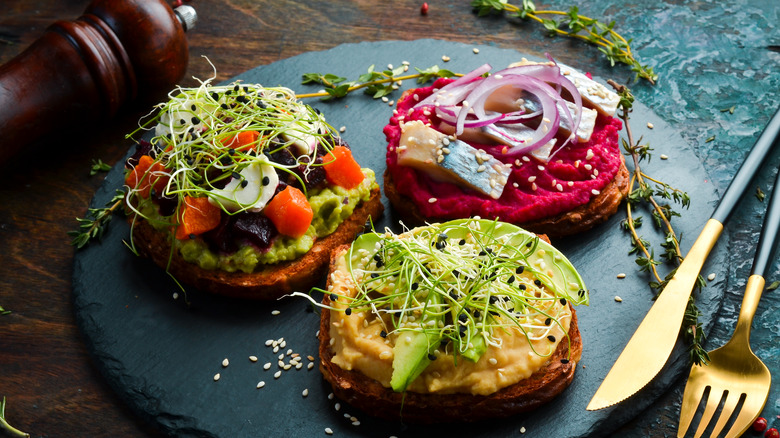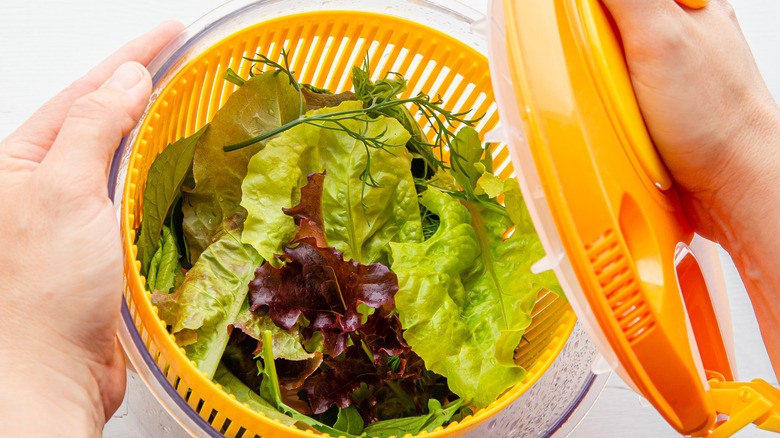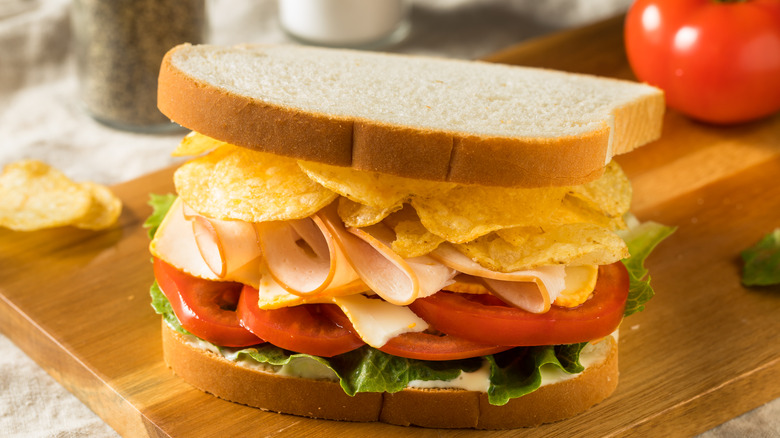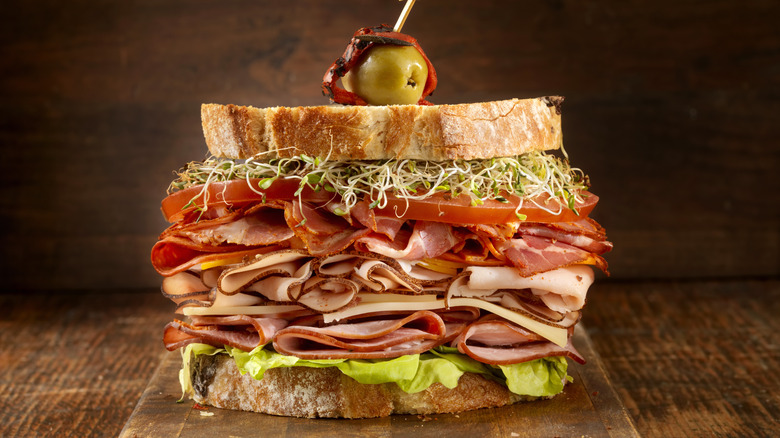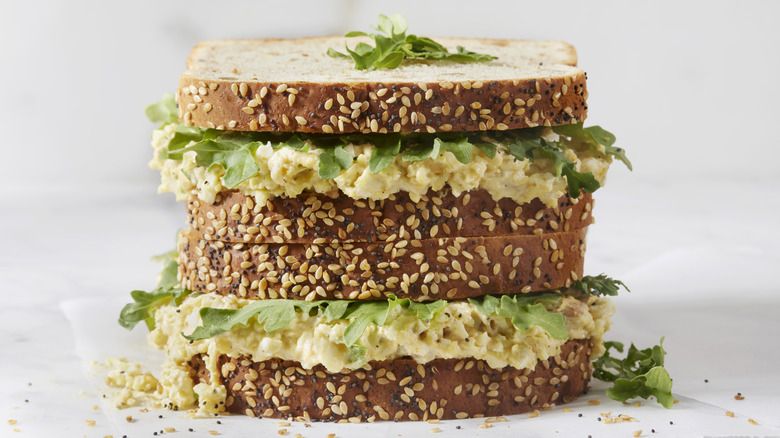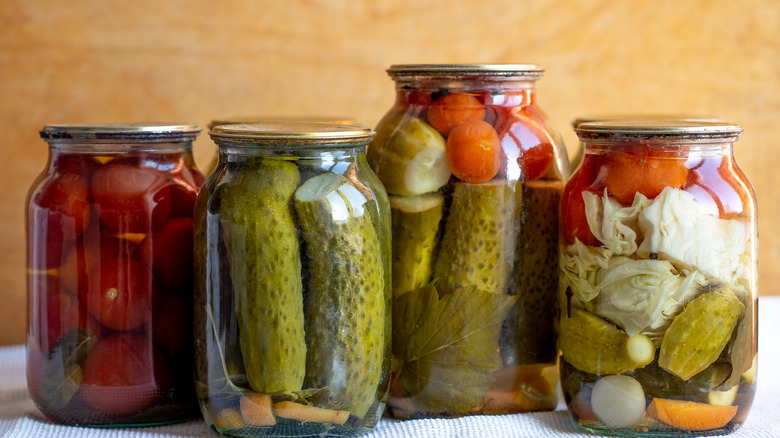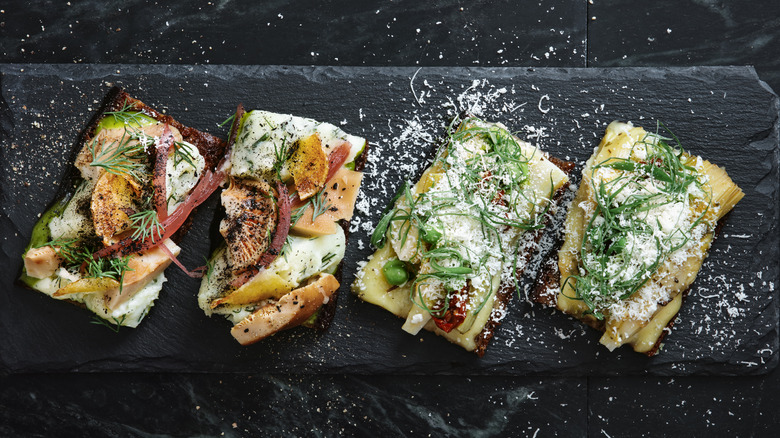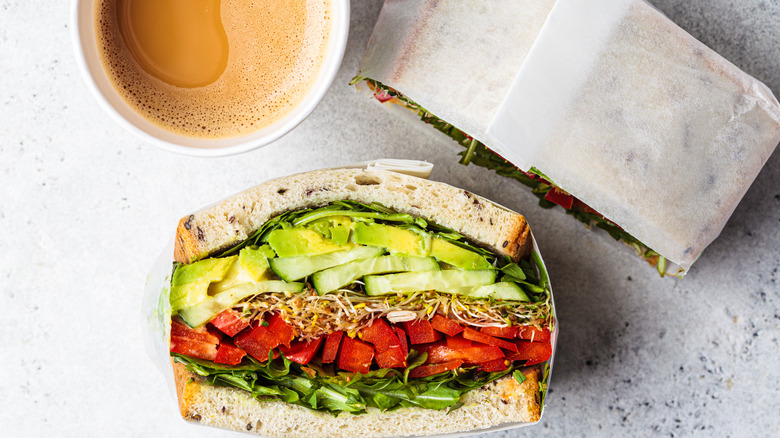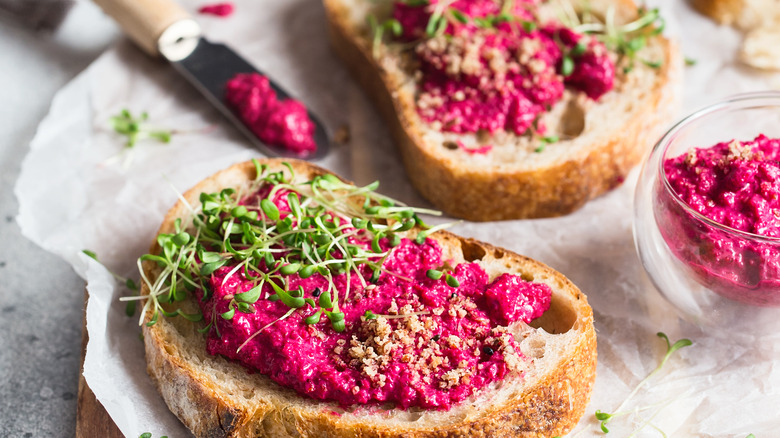Mistakes Everyone Makes With Sandwiches
Life is busy, yet sandwiches can be quick and still delicious while effortlessly combining convenience and flavor. Whether it's a hearty club sandwich, a vegan take on a BLT, or a humble peanut butter and jelly creation, sandwiches have become an indispensable part of our culinary repertoire. Although they seem simple, crafting the perfect sandwich is an art that eludes many of us.
In our quest for a quick and satisfying meal, we often overlook the finer details that can elevate a sandwich from ordinary to extraordinary. From poorly balanced fillings to soggy bread, there are many common mistakes that even the most seasoned sandwich lovers unknowingly make. But don't worry, we're going to delve deep into the world of sandwiches to uncover these missteps, and — more importantly — how to avoid them. Join us as we embark on a mouthwatering journey of discovery, exploring the top mistakes everyone makes with sandwiches. Whether you're a culinary novice or an experienced foodie, this guide will equip you with the knowledge and skills to revolutionize your sandwich-making game.
Not exploring different bread options
If you always reach for a sliced white packaged loaf from the grocery store when you make sandwiches, you're doing yourself a disservice. The bread makes the sandwich, and there are so many great options to explore on your journey to the perfect meal or snack. Choosing a lackluster bread is like ignoring the foundations of a building.
The type of bread you choose can dramatically influence the texture and taste of your sandwich. From soft and fluffy, to crusty and chewy, each variety brings different elements to the party. For instance, hearty rye or whole-grain bread adds a robust earthiness, while a delicate ciabatta leaves room for the fillings to shine while still adding some flavor to the mix.
You might want to think about which types of bread work with which fillings. For instance, focaccia pairs nicely with Italian flavors, while a fluffy pita is the perfect partner for Middle Eastern fillings, such as falafel and hummus. Beyond taste, the choice of bread also impacts the overall structure and handling of the sandwich. If you're piling up a substantial array of fillings, sturdy artisan bread with a firm crust will prevent the dreaded sogginess that can plague more delicate slices.
Skimping on the condiments
Few things in life are more disappointing than a dry, flavorless sandwich, but so many people skimp on condiments when putting together their bread-based masterpieces. Condiments add a burst of flavor that complements other ingredients in a sandwich. Whether it's tanginess from mustard, creaminess from mayonnaise, spiciness from hot sauce, or sweetness from ketchup, condiments elevate the taste of the sandwich to a whole new level. A well-balanced combination of condiments can transform a sandwich into a culinary triumph.
Condiments also contribute to the moisture and texture of the sandwich. They help prevent the sandwich from becoming dry and bland. For example, a judicious spread of mayonnaise or aioli can add creaminess, ensuring every bite is a delightful and satisfying experience. Without any condiments — or just a stingy spread — your sandwich might feel dry, making it less enjoyable to eat.
So, what condiments should you use in a sandwich? The sauce aisle is your oyster — basically, if it's wetter than bread, you can spread it in your sandwich. However, if you need some inspiration, you could try relish to add a sweet zinginess, pesto for its fresh, herbaceous taste, horseradish sauce for a spicy kick, or ranch for its tangy, herby flavor. That's not to mention all the basics, such as mayo, mustard, and barbecue sauce.
Not looking further than lettuce when adding greens
While lettuce can add a refreshing crunch, it often lacks flavor compared to other leafy greens. By trying different greens, you can elevate your sandwich game. Not to mention that variety makes life more interesting. Lettuce can also become wilted and soggy in a sandwich, especially if it comes into contact with moisture from other ingredients. Alternatives like baby spinach, Swiss chard, or microgreens can maintain their texture better.
But leaving your lettuce habit behind is easier said than done. You need to know what greens you can try instead of lettuce. For starters, baby spinach leaves are tender, versatile, and have a mild flavor that works well with various sandwich fillings. Then there's arugula, which has a peppery taste that can add a pleasant kick to your sandwich. If you prefer heartier greens, kale is an excellent option. It has a slightly bitter taste and a robust texture. You can use raw kale, or lightly massage it with oil to soften it for the sandwich.
The colorful stems and tender leaves of Swiss chard can add both visual appeal, and a mild, earthy taste to your sandwich. You could also try microgreens, which offer concentrated flavors, and add an elegant touch to your sandwich. Of course, it would be remiss not to mention fresh herbs, such as basil, cilantro, and dill. These bring a delicious hit of fragrance and flavor to any sandwich.
Leaving your greens wet after washing them
If you've never experienced the disappointment of a soggy sandwich, you're one of the lucky few. Leaving your greens wet after washing them is a one-way ticket to soggy bread and a subpar sandwich. Excess moisture from wet greens can also dilute the flavors of other ingredients in your sandwich, diminishing the taste experience.
One simple way to keep wet greens out of your sandwich is to pat them dry with a clean kitchen towel or paper towel after washing. Removing the excess moisture will prevent it from seeping into the sandwich. You can also use a salad spinner to quickly and efficiently dry greens. Simply place the greens in the basket, rinse under cold water, and spin dry to remove the water thoroughly. You could also wash your greens in advance, and then store the washed and dried greens in an airtight container lined with paper towels or a dry kitchen towel. This will help absorb any residual moisture, and keep the greens fresh until you're ready to assemble your sandwich.
Putting most condiments directly on the bread
It seems to make sense that you'd spread your condiments directly on the bread, and then layer fillings in between. However, this can lead to a soggy sandwich, especially if you aren't going to eat it right away. This is particularly true of wetter condiments, like ketchup and barbecue sauce, spread onto fluffy bread that absorbs moisture more easily than denser options.
To keep moisture from reaching the bread, create a barrier between the bread and the condiments. Use ingredients that have lower moisture content, such as cheese, lettuce, or thinly sliced vegetables, as the first layer on the bread. These ingredients act as a protective barrier, keeping the bread from getting soggy. Rather than on the bread, spread your condiments on the interior fillings of the sandwich. This way, the condiments will be well-distributed throughout the sandwich, adding flavor without saturating the bread with excess moisture.
If you're preparing sandwiches for a picnic, lunchbox, or on-the-go, you can also consider packing condiments separately in individual packets or small containers. This way, you can add condiments just before eating, ensuring the bread stays fresh.
Not using butter or mayo as a barrier
Many of the biggest sandwich mistakes relate to making the bread soggy. But imagine you can use a special barrier to keep moisture soaking into your sandwich. It sounds like a dream, but it's actually possible to use butter or mayonnaise as a barrier. While most condiments make bread soggier, mayo's high-fat content makes it an excellent barrier to keep moisture from other ingredients soaking into the bread.
If you like butter in sandwiches, this makes the best barrier, but mayo is also a good option. Or you could use both. Spread your butter or mayo on the inside of both layers of bread. Then build your sandwich as you would usually. These spreads act like a protective rain jacket for your bread, keeping it dry even when exposed to moisture. This makes your whole sandwich-eating experience much better. Not only do you have some delicious condiments and spreads to make your sandwich more tasty, your bread won't be soggy or fall apart.
Not adding enough texture to your sandwich
When you think about how to make your sandwich more interesting, the texture might not be the first thing you think of. The flavor is generally higher on most people's list of priorities, but it's a mistake to ignore texture. If your sandwich is made up of soft bread with soft fillings, it can quickly get boring to eat.
One easy way to add texture is to toast the bread, or use a naturally crispier or chewier type of bread, such as a sourdough baguette. People also add lettuce for texture, but you can do better than that. Get creative by adding seeds or chopped nuts for texture. Crispy onions or bacon bits also add a nice crunch — and you might be surprised that most store-bought bacon bits are actually meat-free, so vegetarians don't have to miss out.
Pickles, sauerkraut, kimchi, or other fermented vegetables are other options for adding a crunchy element to your sandwich — this time with added tang. Even something as simple as a handful of potato chips adds a crispy element. You should also think carefully about how you layer the ingredients to maximize textural differences. For instance, by alternating softer and crunchier ingredients.
Overfilling your sandwich
We've all heard of the saying "less is more", and while you might not necessarily think that applies to sandwiches, it can be the case. Of course, you don't want an underfilled, tasteless sandwich, but people often overcompensate, and end up jam-packing their sandwich with fillings.
Overfilled sandwiches can be challenging to eat, as they become too large and unwieldy. It may be difficult to take a bite without the fillings spilling out, making it messy and inconvenient. That's before you even get to taste. When you overfill a sandwich with too many ingredients, the flavors may become muddled and overwhelming. The individual tastes of each component may get lost, so your sandwich is less delicious. What's more, overfilling a sandwich can lead to excessive moisture being trapped between the ingredients. This can cause the bread to become soggy, making the sandwich less appetizing.
Instead of overfilling, you should stick to a few complementary fillings that allow each ingredient to shine, and use moderate portions of each filling to maintain a well-balanced and manageable sandwich. By being mindful of the quantity and variety of fillings you include in your sandwich, you can create a delicious, enjoyable, and mess-free meal.
Not balancing the ratios of ingredients
It's not just about what fillings and how much of them you put in your sandwich, it's about creating the proper ratio. If you ignore the ratios of bread to protein and veggies, you can end up creating a monstrosity. Balancing the ratio of fillings in your sandwich is crucial. The art of sandwich-making lies in harmonizing flavors and textures, and achieving the right balance ensures that each ingredient complements the others.
A well-balanced sandwich offers a harmonious blend of flavors from all the ingredients. Each element should contribute to the overall taste profile without overpowering others. Striking the right balance ensures that you can savor the unique taste of each filling. It should also provide a variety of textures, ranging from crunchy to creamy, and from tender to chewy. Texture plays a vital role in the overall enjoyment of a sandwich, making each bite more interesting and satisfying.
But there's no absolute right or wrong when it comes to ratios. Some people like a fairly even balance of bread, veggies, and protein — such as meat, cheese, mock meats, or legumes — in their sandwiches. Others like more protein than salad or like to go heavy on veggies. The key is figuring out how to create a balance that tastes good while appealing to your preferences.
Ignoring acidic ingredients
The correct use of acidic ingredients can make or break a sandwich. Go without anything acidic, and the flavors can taste muddy, but too much acid makes for an unpleasant tart bite. Just the right amount, however, adds a zing and brightness that can transform a sandwich from just okay to incredible. Acidic ingredients add depth and complexity to the flavors, making the sandwich more interesting and memorable.
But what can you add in the way of acid? A squeeze of lemon juice over the salad, or other ingredients before assembling is one simple way of incorporating it into your sandwich. Pickles — whether dill, bread-and-butter, or spicy — provide a tangy and crunchy addition to sandwiches. They pair well with a wide range of ingredients, from deli meats to grilled vegetables. Other pickled vegetables also make zippy additions to a sandwich, as do kimchi and sauerkraut. If you don't want too much of an acidic punch, even tomatoes bring some much-needed tartness to the table.
Not trying open-faced sandwiches
If you think sandwiches only mean fillings in between two slices of bread, you're missing out on the magical universe of open-faced sandwiches — and that's a real shame. Open-faced sandwiches feature toppings piled on a single slice of bread. They're not as portable as other sandwiches, but you get a greater ratio of toppings to bread, and you can eat them with a knife and fork, so a mess is less of a consideration.
Open-faced sandwiches are a feast for the eyes. With their toppings beautifully displayed on a single slice of bread, they look like edible works of art. The vibrant colors and artistic presentation add to the overall dining experience. Since you don't have to think about whether ingredients will fit neatly between two slices of bread, you can focus on balancing flavors and textures with each topping. You can layer various ingredients to create a harmonious blend of tastes — ranging from savory to sweet — and textures — from creamy to crunchy.
Open-faced sandwiches are delightfully versatile. You can top them with any ingredients, and can enjoy them at any time of the day. They can be a creative breakfast option, a light lunch, or even a tasty dinner choice when paired with a side salad.
Treating vegetables as an afterthought
Vegetables play a vital role in adding freshness, crunch, and a burst of flavor to a sandwich. Neglecting vegetables in a sandwich is a mistake for a number of reasons. Firstly, vegetables introduce a variety of textures. Whether it's the crispness of lettuce, the juiciness of tomatoes, or the crunchiness of bell peppers, the different textures create a more interesting and satisfying eating experience.
Vegetables also are packed with essential vitamins, minerals, and dietary fiber, providing a wide range of health benefits. By including vegetables in your sandwich, you can make it a more nutritionally balanced and wholesome meal. Not to forget that they add depth and complexity to a sandwich's taste profile. They provide natural sweetness, earthiness, or spiciness, which can complement other ingredients, and make your sandwich more enjoyable.
When designing your sandwich, make vegetables an integral part of the filling. Think about which vegetables would complement the other ingredients and add them mindfully. You should also mix and match different vegetables to add diverse colors, flavors, and textures.
Not taking spreads right up to the edge
You're eating your sandwich and have been enjoying moist, flavorful bites containing delicious spreads or condiments, such as mayo, pesto, or hot sauce. Then, you get to your last bite, only to find it dry and bland. This is the potential peril of not taking spreads right up to the edge of your bread when making a sandwich.
We get it — life is busy and you might be making your sandwich in a hurry. Maybe you've only got a short lunch break, or you're trying to make your sandwich before you leave for work. It may seem like taking those extra few moments to make sure your butter and any condiments reach the edge of the bread isn't worth it. However, it will only end in disappointment when your sandwich isn't as good as it could be. So, take those precious seconds to spread your condiments right up to the edge. You won't regret it.
Forgetting about seasoning
So many people forget about seasoning when they make sandwiches. You wouldn't make a pasta sauce or bowl of mashed potatoes without a liberal pinch of salt and pepper, so why neglect it when it comes to sandwiches? Never forget about the seasoning, unless you want bland, underwhelming results.
Seasoning adds depth, complexity, and character to any sandwich. Properly seasoning the fillings can bring out the natural flavors of each ingredient, making the sandwich more enjoyable and satisfying. Even the simplest sandwiches can be transformed with a sprinkle of salt, a dash of pepper, or a pinch of herbs. Seasoning can turn an ordinary sandwich into an extraordinary culinary creation, and can give you the freedom to customize your sandwich according to your taste preferences. You can adjust the level of saltiness, spiciness, or tanginess to suit your liking.
You can start with salt and pepper, but there's much more on offer in the world of seasonings. Try using herbs like basil, cilantro, parsley, or oregano to add freshness and aroma. Experiment with spices like paprika, cumin, or garlic powder to add depth and complexity. Choose seasonings that complement the specific ingredients in your sandwich. For example, Mediterranean-inspired fillings may pair well with oregano and garlic powder, while Mexican-inspired fillings may benefit from cumin and chili powder.
